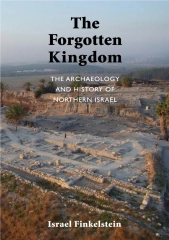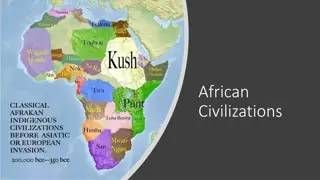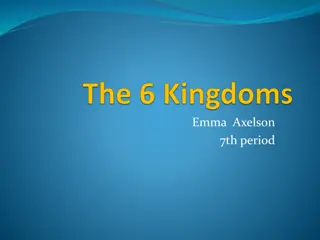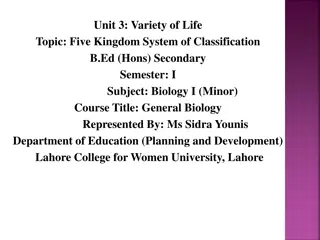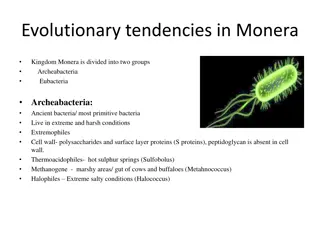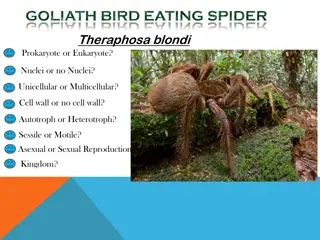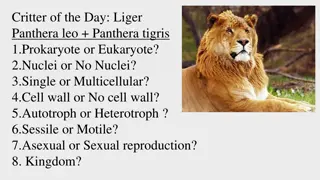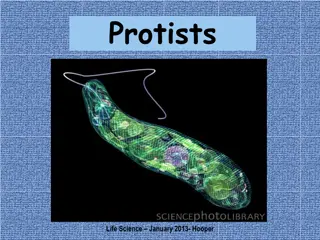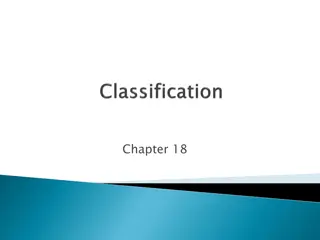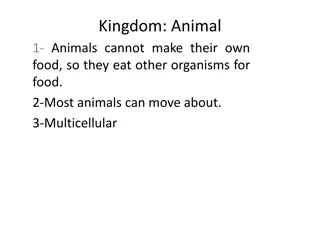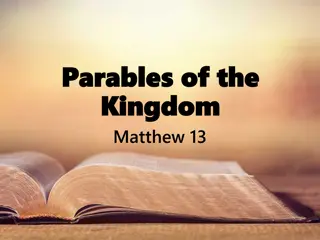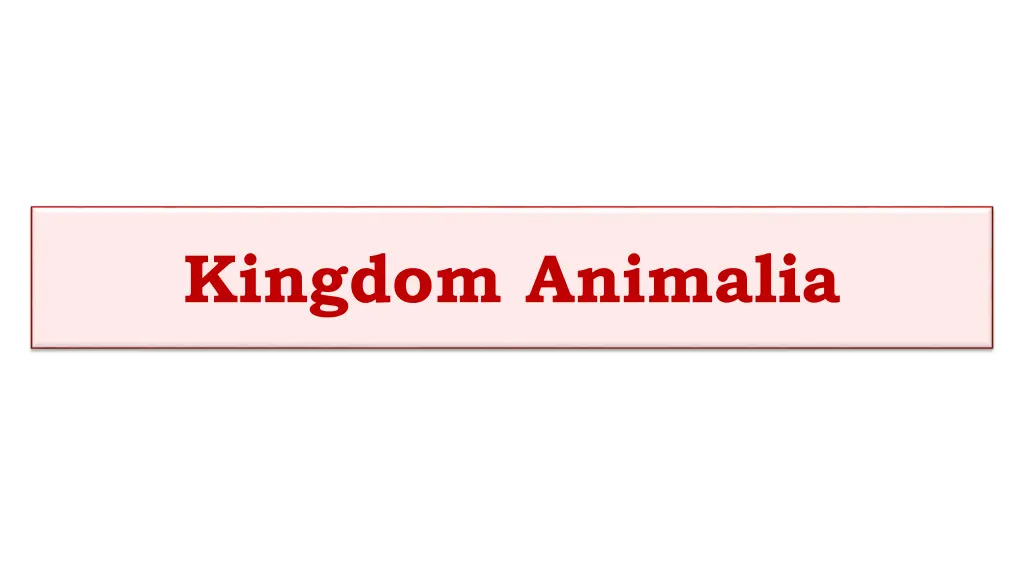
Animal Classification: Phylum Porifera and Cnidaria Overview
Explore the classification of animals in the Kingdom Animalia through a detailed look at Phylum Porifera and Phylum Cnidaria. Learn about the characteristics, classes, and examples of organisms in these phyla, including sponges and more evolved animals with radial symmetry. Discover the diversity and unique features of Porifera and Cnidaria in this informative guide.
Download Presentation

Please find below an Image/Link to download the presentation.
The content on the website is provided AS IS for your information and personal use only. It may not be sold, licensed, or shared on other websites without obtaining consent from the author. If you encounter any issues during the download, it is possible that the publisher has removed the file from their server.
You are allowed to download the files provided on this website for personal or commercial use, subject to the condition that they are used lawfully. All files are the property of their respective owners.
The content on the website is provided AS IS for your information and personal use only. It may not be sold, licensed, or shared on other websites without obtaining consent from the author.
E N D
Presentation Transcript
Kingdom Animalia According to five kingdom system of classification of living organisms all the organisms are classified into five major groups. Of them last one is the Kingdom Animalia. In this group all the animals are included. Kingdom Animalia basically comprises those organisms which are eukaryotic, multicellular and heterotrophic. Further ability of locomotion, well developed nervous system and many other features are added in higher animals. All animals belong to this kingdom and as there are several types of animals they are further classified under different phyla and classes. In this unit we are going to study details of animal classification.
Phylum Porifera This phylum include simple animals like sponges. They possess cellular grade organization. Nearly all animals belonging to this phylum are asymmetric Their body forms varies considerably. Some sponges are vase like, some are flat, globular but mostly they are irregular and hence are asymmetric. They are diploblastic animals. Most important characteristic feature of proferans is that these animals possess canal system. These animals show presence of internal skeleton. This internal skeleton is in the form of rod like calcareous structures. These animal possess pores on the body hence the name, Porifera. Nutrition in these animals is holozoic and resemble mostly with the protozoans. Reproduction in these animals is of both types. i.e. asexual as well as sexual. Most of the animals belonging to this phylum are marine while few are freshwater. E.g.- Sycon, Spongilla, Hyalonema
Phylum Porifera Phylum Porifera is divided into three classes as follow- 1. Class: Calcarea i. They are commonly called as calcareous sponges. ii. They are exculsively. iii. They are Small-sized sponges, and are about 10 cm in height. iv. Mostly Vase Shaped v. Osculum is narrow and terminally placed. vi. Calcareous spicules are present as an endoskeleton. vii. Canal system is asconoid, syconoid and leuconoid type. Asconoid type of canal system is found only in the class Calcarea. viii. E.g. Sycon, Grantia
Phylum Porifera 2. Class: Hexactinellida i. They are large sized and may range upto 30 cm in height. ii. Body vase shaped with base like structure. iii. Skeleton is made up of silicous spicules. iv. Osculum is wide and spongocoel opens to exterior by it. v. Syconoid or leuconoid type of canal system. vi. Commonly called glass sponge . vii. E.g. Hyalonema, Euplectella 3. Class: Demospongiae i. They are mostly marine but few are freshwater also. There are some freshwater sponges which belong to this class. ii. They are known for the brilliant color pattern on them. iii. Endoskeleton is silicious or in many cases it is absent. iv. Canal system of leuconoid type only. v. Contractile vacuoles are present in freshwater sponges. vi. E.g. Spongilla, Chalina
Phylum Cnidaria These animals are more evolved than the portiferan animals. They show tissue grade organization and all four types of tissues are present in these animals. Animals belonging to this phylum are having radial symmetry in most of cases. These animals show polymorphism and can exist in many forms. The body of these animals show two forms i.e. polyp and medusa. The polyps are cylindrical and sedentary they are found in the colonies or they are solitary also. While the medusa are umbrella shaped, they are free swimming but these are compulsorily solitary. These two forms show alternation in generation. The oral end of the most animals shows presence of tentacles. Tentacles possess cell named as cnidoblast hence the name. In these animals cavity is present, this cavity is of digestive system hence it is also called as coelenteron. Hence another name of this phylum is Coelenterata. Reproduction is of both types, i.e. asexual and sexual. Asexual reproduction is by budding.
Phylum Cnidaria Class Cnidaria is further classified into three classes as follow- Class: Hydrozoa- These animals are mostly colonial few are solitary. These animals are found attached to the substratum while few are free living. Most of them are marine while few are freshwater. Classical example of this group is Hydra. Hydra: It is one of the simplest multicellular animal. It is freshwater animal found all over in the lakes, ponds, streams etc. It is shows radial symmetry. Body is elongated and cylindrical. It is attached to the substratum. The free end of this animal bears mouth and tentacles while the attached end is basal disc. Basal disc possesses gland cells which secrete sticky substance for adhesion with the substratum. At the free end and around the mouth there are long thread like structures known as tentacles. These tentacles are used for the purpose of food collection and locomotion.
At the free end and around the mouth there are long thread like structures known as tentacles. These tentacles are used for the purpose of food collection and locomotion. Body of Hydra bears muscle fibers with the help of which movements like floating, climbing, somersaulting, gliding etc are possible in it. Gaseous exchange and removal of nitrogenous waste material occurs by simple diffusion hence there are no blood vessels, excretory system or respiratory system. The mode of reproduction in Hydra is by asexual as well as sexual method. Asexual reproduction in Hydra occurs by budding. While sexual reproduction occurs by fusion of gametes. Hydra shows great power of regeneration.
Class: Scyphozoa- This class comprises jelly fishes. The animals belonging to this class are marine, they are solitary and free living. Medusa stage is dominant while polyp stage is rudimentary or absent. Medusae are large, conspicuous and free living. Aurelia: It is the most common jelly fish which is found all over the world in marine habitat. Body of these animals is transparent hence they are not easily visible in water bodies. Medusa stage is the dominant stage. It is umbrella shaped and mostly large and wide. The umbrella shape of the medusa displays two surfaces, oral surface and aboral surface. Towards the oral surface there is a presence of long, elongated tentacles. In addition to the tentacles there are arm shaped structures towards the oral end called as oral arms. All jelly fish are carnivorous and feed upon the planktons. For the feeding purpose oral arms are used. The prey animal is captured and injected with the poisonous substances by the oral arms.
The food is digested in the stomach and gastric pouch. Exchange of gases and removal of nitrogenous waste material is carried out by general body surfaces. Some kinds of sense organs are present in the jelly fish. Class Anthozoa: This is the largest class of phylum cnidaria. They are found attached to the substratum. They may be solitary of colonial, but most of them are colonial. All types of corals are included in this class. Medusa stage in these animals is reduced. In Corals the ectoderm secretes the exoskeleton of calcium carbonate. E.g. Meandrina: It is also called brain coral. Living brain corals are made up of several polyps. These polyps secrete calcium carbonate which results into formation of hard exoskeleton. The hard exoskeleton remains as it is even after the death of the animals inside. Such exoskeleton goes on accumulating generation after generation which may result into the formation of gigantic coral reef. The surface of such colony is marked by grooves and depressions which look like the surface of human brain.
Phylum Platyhelminthes They are also known as the flat worms. The body is dorsoventrally flattened. Shape of the body of animal is varied depending upon adaptations. Some of them are ribbon shaped while some of them are leaf shaped. They show bilateral symmetry. Flat worms are the acoelomate animals. Body is segmented in some animals. Digestive system consist of mouth, pharynx and intestine. In tape worm digestive is absent. Most of the animals belonging to this phylum are parasatic. They show parasitic adaptations. Respiratory and circulatory system are absent. They are hermaphrodite. Reproduction is by asexual mode in some freshwater worms. Parthenogenesis and polyembryony is also seen in some cases.
Phylum Platyhelmnthes Class Platyhelminthes is further classified into three classes as follow- Class: Turbellaria These animals produce turbulence in water with the help of cilia hence the name given to the class. Hydra: It is one of the simplest multicellular animal. It is freshwater animal found all over in the lakes, ponds, streams etc. It is shows radial symmetry. Body is elongated and cylindrical. It is attached to the substratum. The free end of this animal bears mouth and tentacles while the attached end is basal disc. Basal disc possesses gland cells which secrete sticky substance for adhesion with the substratum. At the free end and around the mouth there are long thread like structures known as tentacles. These tentacles are used for the purpose of food collection and locomotion.

